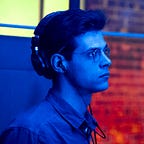Why ‘Rogue One’ is a bad movie
and an even worse ‘Star Wars’ movie
The following will contain spoilers for ‘Rogue One: A Star Wars Story’.
For movies about a rebellion against the threat of imperially ordained “galactic order”, Star Wars movies are pretty rule-governed. There’ll be a climactic battle, there’ll be a charismatic droid, and there’ll be lots to do with heredity and familial lines. Perhaps above all, a Star Wars movie will have three protagonists whose fates are bound together. Rogue One: A Star Wars Story, the first movie to not feature a Skywalker (the most heralded of familial lines in the universe) at its centre, has all of these things.
If there was a checklist — and there almost certainly was — that served initial story discussions, Rogue One would check most things off. There is one notable omission, however. The Crawl — the scrolling yellow text that had appeared at the beginning of every Star Wars movie so far is absent from Rogue One. Because, as an early teaser points out, the plot of Rogue One inhabits a paragraph from the crawl of Star Wars: A New Hope. There’s no Crawl here because, really, we ought to know what’s about to happen.
What we don’t know is who these things will happen to. By the rules, there will be three protagonists who will play pivotal roles in the Rebellion’s securing of the Death Star plans. However, in ensuring we have the typical holy trinity to hang onto, Rogue One missteps in its delivery. This misstep betrays not only perhaps more latent rules of Star Wars but more glaringly rules of good storytelling.
The first 15–20 minutes of Rogue One are honestly a blur. We cut between the three perspectives of Jyn Urso, Cassian Andor, and Bodhi Rook so rapidly that it’s impossible to get a bead on them. The only true scene we’re given is Jyn’s childhood origin story before we’re left to piece together her current identity through fractured moments. This is the character we ought to care about, who adorns every poster about the movie. And all we get of her in Rogue One’s opening is some moodiness in a jail cell.
There are useful contrasts in the other Star Wars movies, most notably A New Hope. The opening of A New Hope lingers with Leia and Vader in a way that exposes their specificity, that forces us to make an investment in their fate. After we make this initial investment, we unhurriedly move to Luke. Even though I think he’s a particularly uninteresting character, A New Hope does what it needs to generate empathy for him, in grounding his home life and backstory through scenes of domesticity on Tatooine. Once we have this empathy, we then move to Han to hopefully fall in love with a character all over again.
Ultimately, the events of any Star Wars movie are pretty silly. The enjoyment of this silliness is tied to belief that for characters we care about it’s meaningful, and that the results of these events will shape other silly events in more movies. However, for Rogue One, even the silly events are inconsequential, a standalone film from which no one will escape to meaningfully effect other movies. We already know what will happen. It’s written in A New Hope’s Crawl after all. The biggest error of Rogue One is believing that we’re showing up to watch a series of events (of which we’re already privy) happen.
I think this error is born out of the fact that Rogue One wasn’t forced to do any real character work. Unlike The Force Awakens which — perhaps most obviously with Finn — went through the motions of building compelling characters that will last many movies, Rogue One knew its stable of characters wouldn’t stick around. As such, they’re treated as disposable, simple agents of pushing events forward like cogs in a machine. But when those events can’t matter, and I’m never properly introduced to the agents of change to care about events that can’t matter, I don’t know why I’m sitting in a theatre watching this thing to begin with.
